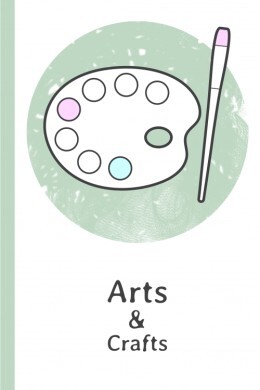Arts and Crafts - Photography Concepts
Here you will learn some English words related to photography concepts such as "exposure", "reflector", and "sensitometry".
Review
Flashcards
Spelling
Quiz

the technique of taking multiple shots of the same scene with different camera settings, typically exposure, to ensure at least one of the shots captures the desired result
a camera feature that allows users to capture multiple consecutive photos in quick succession by holding down the shutter button, making it easier to capture fast-moving or action-packed scenes
a specialized photographic lighting accessory that produces a soft, even light with a slightly specular or glossy quality, often used in portrait and fashion photography to create a flattering, glamorous look
the use of various equipment and techniques to illuminate the subjects and environment in a way that enhances the mood, atmosphere, and visual style of the photo or film
a supplementary light used in photography, videography, and filmmaking to reduce shadows or fill in areas that are poorly lit
the coordination of the camera's shutter speed with the firing of an external flash, so that the flash output is synchronized with the opening of the camera's shutter
a photographic phenomenon where the subject's eyes appear red or orange in a flash photograph, caused by the reflection of the camera flash off the retina of the subject's eyes
a measurement of a flash unit's power output and range, calculated by multiplying the distance between the flash and subject by the f-number of the camera's aperture setting
the main source of light used to illuminate the subject of a shot or scene in film or photography
a self-contained photographic lighting unit that combines a flash tube, power source, and modeling light into a single, portable device
a photographic accessory used to redirect or bounce light onto a subject, typically consisting of a flat or curved surface made of reflective material
a photographic accessory that fits over a studio light or flash unit to create a narrow, focused beam of light
a photographic lighting equipment that diffuses and softens studio light to create a more flattering and natural-looking light for a subject
the aesthetic quality of the out-of-focus areas in a photograph, particularly the way that points of light are rendered and appear as soft, blurred circles or shapes
a photographic effect that occurs when the camera's shutter remains open for a longer period of time, causing moving objects in the scene to appear blurred in the final image
a compositional guideline in photography and other visual arts that suggests dividing an image into thirds both horizontally and vertically, and placing the main subject or points of interest at the intersections or along the lines
the extent of the scene that is captured by a camera's lens and recorded in the final image, measured in degrees and determined by the focal length of the lens and the size of the camera's sensor or film
the space between the top of the subject's head and the top edge of the image frame, and is an important compositional element that can affect the balance and aesthetic appeal of the image
the technique of representing a two-dimensional object in a way that gives the right impression of distance by drawing objects and people that are farther in a smaller size
the space in front of a moving subject that is included in the image frame, allowing room for the subject to move or travel within the frame
a compositional guideline in photography that suggests dividing the image into three triangles by drawing lines from the corners of the frame to the center of the opposite side
the technique of using elements within the scene, such as natural or man-made structures, to surround or enclose the subject and draw the viewer's attention to the main focal point of the image
the degree to which light is blocked or absorbed by a photographic filter or film, usually measured in stops or optical density units
differences in color or in brightness and darkness that an artist uses in a painting or photograph to create a special effect
the connection between the intensity of light and the time during which light is exposed to something in photography
the amount of light reaching a camera sensor or film, determined by aperture, shutter speed, and ISO
the length of time that the camera's shutter remains open to allow light to enter and reach the camera's sensor or film
the opening in a camera's lens that controls the amount of light that enters the camera and reaches the sensor or film
a numerical measurement that represents the size of the lens aperture and determines the amount of light that enters the camera
a visual artifact that occurs in digital photography when a fine, repetitive pattern in the subject, such as a fabric or a grill, interacts with the camera's sensor and produces an unintended, wavy pattern in the final image
a common optical aberration that occurs in photography when different colors of light are refracted differently through a lens and fail to converge at the same point
the extent of the scene that is visible through the camera's lens and recorded in the final image
the sharpness and clarity of the subject in an image, achieved by adjusting the camera's lens to bring the subject into clear and sharp focus
the technology or mechanism in a camera or other optical device that automatically focuses on the subject being photographed or viewed
the range of distance in a scene that appears acceptably sharp and in focus in the final image
the range of distance in a scene that is in focus at a specific camera-to-subject distance and lens aperture setting
the closest distance a lens can be focused at a given aperture setting while still keeping objects at infinity acceptably sharp, and is useful for maximizing the depth of field in landscape
the unintentional alteration of the shape or proportions of objects in a scene, caused by factors such as the curvature of the lens, the angle of view, and the distance to the subject
the range of all types of electromagnetic radiation, including radio waves, microwaves, infrared radiation, visible light, ultraviolet radiation, X-rays, and gamma rays, ordered by wavelength or frequency
the distance between the lens and the camera's sensor or film when the lens is focused at infinity, measured in millimeters, and affects the angle of view, magnification, and depth of field of the final image
the unintentional darkening or shading of the corners or edges of an image, caused by factors such as the lens design, the use of filters or lens hoods, or the angle of light entering the lens
a camera setting that allows the user to adjust the camera's exposure settings
a numerical representation of the camera's exposure settings, calculated by combining the aperture, shutter speed, and ISO sensitivity values into a single value
the range of exposure settings that a camera's sensor or film can capture while still producing an acceptable level of image quality and detail
a photographic technique developed by Ansel Adams and Fred Archer that involves a methodical approach to exposure and development to achieve the desired tonal range and contrast in the final image
a camera setting that determines how the camera measures the light in a scene to set the exposure settings
a type of image file that uses lossless compression to reduce file size without compromising image quality
a type of image file format that uses lossy compression to reduce file size by discarding some image data
a type of image file format that uses lossless compression to reduce file size without compromising image quality
a type of image file format that stores digital images as a grid of pixels, with each pixel represented by a specific color or shade
the adjustment of colors in a photographic image to ensure that they appear natural and accurate, with no dominant color cast or tint
| Arts and Crafts | |||
|---|---|---|---|
| Wood, Stone, and Metal Crafts | Areas of Photography | Photographic Formats | Photography Concepts |
| Types of Camera | Parts of Camera | Photographic Processing | |


